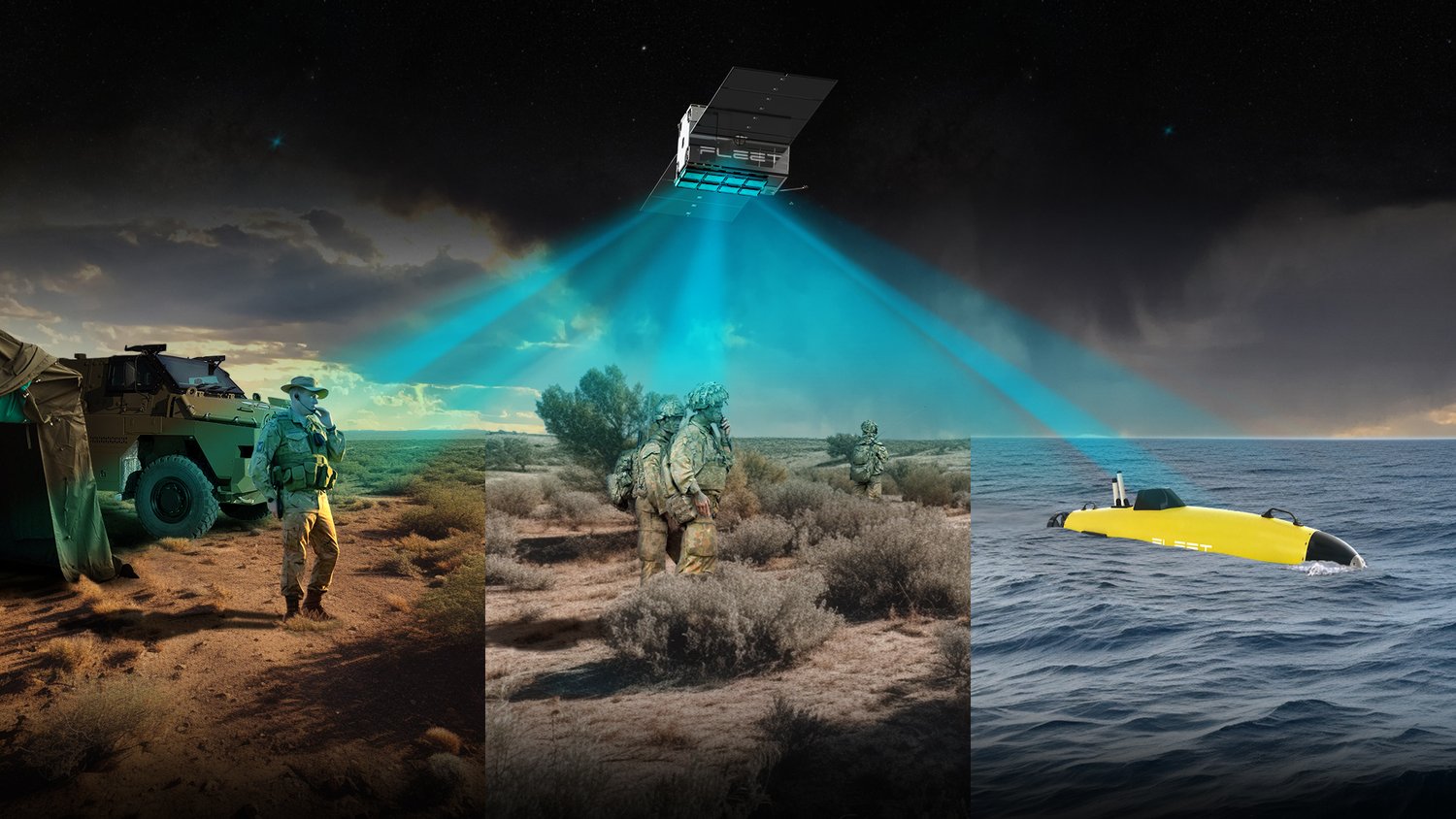Defence Space Command has signed an AUD$6.4 million contract with Fleet Space Technologies, in a program which will integrate SmartSat CRC’s ASCEND2LEO research and development project, led by Defence Science and Technology Group (DSTG), the University of South Australia and Safety from Space, with Fleet satellite technology.
The ASCEND2LEO project will apply Fleet’s satellite technology to demonstrate tactical voice and data satellite communication using Low Earth Orbit (LEO) satellite communications to support Command and Control of deployed Defence capabilities. The agreement will see Fleet’s next-generation of Centauri satellites used to develop and demonstrate LEO satellite communications systems with a focus on tactical communications and data transmission where connectivity is limited. This innovative approach enables Defence to take advantage of the most modern commercial space technology used by the mining industry with the most up-to-date research to rapidly advance space capabilities.
Colonel Clifford White, Director Space Services at Defence Space Command commented on the partnership: “Australia is fortunate to have a talented space industry with an inventive spirit. Space is operationally critical to the achievement of the Defence mission, and this is an example of innovative way to advance our capability and support the development of a sustainable national space enterprise. We look forward to working with Fleet Space as they bring new approaches to enhance satellite communication capabilities to meet Defence’s needs.”
SmartSat CEO Professor Andy Koronios said: “ASCEND2LEO is an ambitious project and a prime example of how SmartSat can help our partners successfully develop and demonstrate innovative Australian technology to customers, such as Defence. It delivers one of the Defence Space Strategy objectives, being that ‘Defence may benefit from repurposing civilian technology for military means, without having to invest in R&D or venture incubation’. SmartSat was able to work with Fleet to develop a proposal to do just this – repurpose technology being used for world leading mineral exploration, and technology SmartSat developed to build more resilient Search and Rescue infrastructure, into a demonstration of tactical voice communications.”
 Connecting defence assets and personnel from low earth orbit (Image courtesy of Fleet Space Technologies)
Connecting defence assets and personnel from low earth orbit (Image courtesy of Fleet Space Technologies)
As an emerging Australian force in the global ‘New Space’ industry, Fleet Space has a unique opportunity to develop and embrace cutting-edge technologies and methodologies for domestic satellite technology production. The company’s key capabilities are low-power, high-performance edge computing in small spacecraft and terrestrial devices, as well as additive manufacturing. By leveraging Australian competitive strengths, Fleet Space will complement, augment, and reinforce sovereign space capability for the nation and its allies.
Fleet Space’s AUD$6.4 million contract with Australia’s Defence Space Command marks the company’s first foray into the defence sector, as their Centauri satellites will be used to develop a LEO satellite communications system under the program ASCEND2LEO. This partnership aims to advance the domestically-led national space and defence industry by utilising Australia’s competitive strengths.
In addition to expanding into the defence sector with their groundbreaking LEO satellite communications systems, Fleet Space continues to innovate and diversify their offerings with their ExoSphere system, providing a cutting-edge solution for mining exploration. This comprises highly portable sensors called Geodes, which use ambient noise tomography (ANT) to collect subsurface data. This data is beamed to the ExoSphere constellation of LEO satellites, then relayed to computers that use machine learning to generate detailed 3D subsurface maps. This will help guide explorers to find the resources needed to build our sovereign mineral wealth for Australia’s future industries and energy security. With their focus on developing and embracing new technologies and methodologies, Fleet Space is poised to become a leader in Australia’s growing space and defence industry.
Read the full media release here.